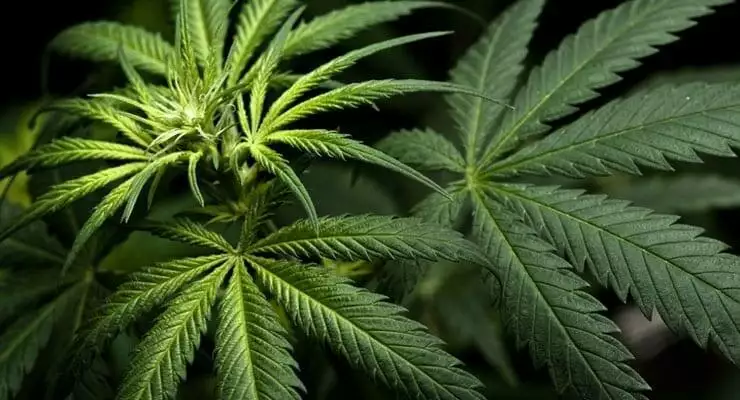
What Every Parent Needs to Understand About Marijuana and the Adolescent Brain
“Which is worse for you, alcohol or pot?”
With the increasing trend toward legalizing marijuana, this is a question that is foremost in the minds of a lot of teens right now, and it is critical that parents and educators understand a few important things before they try to respond.
Most responses miss the real issue: the difference between the adult brain and the adolescent brain. For the adolescent brain in particular, pot is more damaging, and right now it is potentially more damaging than it has ever been. Here is why:
Pruning and Paving: Marijuana Effects the Primary Jobs of Adolescent Brain Development
Picture your brain as a jungle. When a baby is born, the jungle is a tangled mess of vines. Every experience that child has begins to create pathways through that jungle, as neurons are fired to create neural pathways. From birth to about age 10, the primary job of the brain is to fire neurons and create pathways. The experiences that we have determine the pathways that are created.
During adolescence, the goal is to take that jungle and transform it into an adult brain, and the primary goal is efficiency. In order to do that, the brain has two major tasks: pruning and paving.
Pruning is the task of getting rid of neurons that we don’t need. When we are born, we have 100 billion neurons. Keeping all of them throughout our lives would be wasteful (undermining efficiency), because we don’t need all of them. In adolescence, one job of the brain is to determine which neurons to prune away. The way that we do this is through neurochemicals. One particular neurotransmitter that helps determine which neurons are pruned is endocannabinoids, which happen to have a very similar molecular structure as cannabis, enabling marijuana to take on that role and snip away a few neurons that we might have found useful in the future. I like to use the metaphor of it being kind of like handing out younger sibling the scissors to give us a haircut: the results are not always what we hope for.
Paving is a process by which the neural pathways that we have developed in childhood get covered with a fatty substance called the myelin sheath, which helps the signals travel along those neural pathways much faster. Think about it like paving a road. The benefit is that we are able to travel much faster, but it also makes the road more permanent. What we gain in speed, we lose in neuroplasticity, which is why kids have an easier time learning new things, but adults are faster at the tasks that have already been learned. One of the things that marijuana does is to attack the myelin sheath, putting pot holes in those neural pathways (yes, the pun is intentional), slowing down our processing.
Adolescence Has Doubled
Yes, you read that correctly. The adolescent period of the brain has doubled. It used to be that adolescence began at about age 13 and ended around age 20. Now it starts at about 10 and continues to about 25 or 28. Now, as the mom of four children, ages 11, 13, 15, and 16, this is a scary, and wonderful, thought.
In his book, Age of Opportunity: Lessons From the New Science of Adolescence, Laurence Steinberg, does a fantastic job of explaining the risks and benefits of the extension of adolescence. This time period in the brain is full of opportunity, but it is also fraught with risks. The vulnerability to the damaging effects of marijuana is one significant point of risk, particularly given that the popularity of vaping and the widespread access to liquid marijuana seem to lead kids to experiment with pot early.
Potency & Early Use
Like most other industries, the marijuana industry has evolved significantly since our childhoods. The products that are available now are significantly more potent than those that were available even 10-20 years ago.
According to a recent Washington Post article, citing a study from the Netherlands,
Marijuana potency more than doubled from 8.6 percent in 2000 to 20.3 percent in 2004, which was followed by a surge in the number of people seeking treatment for marijuana-related problems. When potency declined to 15.3 percent THC, marijuana treatment admissions fell thereafter. The researchers estimated that for every 3 percent increase in THC, roughly one more person per 100,000 in the population would seek marijuana use
disorder treatment for the first time.
Additionally, the earlier that kids start getting high, the more likely they seem to be to experience lasting damage.
According to a recent article in VeryWellMind,
A Duke University study found that children who smoke marijuana at least weekly before age 18 displayed lasting harm to their intelligence, attention, and memory compared with those who began using marijuana after age 18.
The Duke study also found that quitting marijuana use later did not reverse the cognitive damaged caused by regular marijuana use before age 18.
So, What About Legalization?
Legalization of marijuana has a lot of benefits: the ability to regulate the products, the tax revenue that it could produce, the ability of law enforcement to focus on more violent crimes, the availability of marijuana for medical uses.
However, if we continue to move toward legalization, it is critical that we dedicate some of that increased revenue to education and regulation, ensuring that people understand the detrimental effects of marijuana on the adolescent brain and preventing its use among that population.
For more information, or to book a workshop about the brain science of emotional health and resilience, contact Donna Volpitta, Ed.D at dvolpitta@centerforresilientleadership.com




